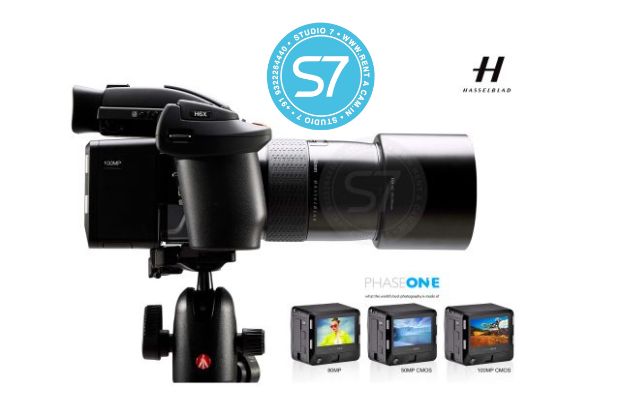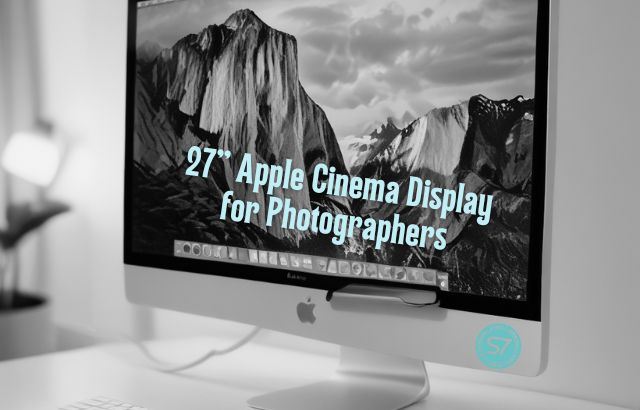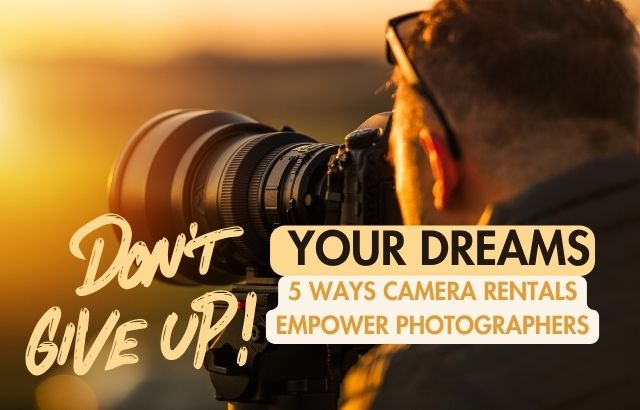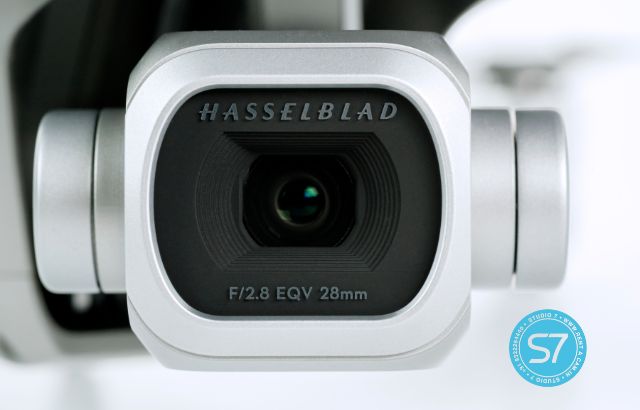In the world of professional photography, image quality is of paramount importance. Every detail matters, and capturing the highest resolution possible is a goal shared by many photographers. Two remarkable contenders in the world of high-resolution photography are the 100-megapixel Phase One IQ3 and the Hasselblad H6x body. In this blog post, we will delve into the features and capabilities of these exceptional camera systems and explore their significance in the field of photography.
1. Unleashing the Power of 100 Megapixels

The Phase One IQ3 and Hasselblad H6x body both offer an astonishing 100-megapixel resolution, allowing photographers to capture images with unparalleled detail and clarity. This level of resolution opens up a world of possibilities, from large-format prints to extreme cropping flexibility, delivering astonishingly sharp and lifelike images.
2. Superior Image Quality
Both camera systems boast superior image quality, thanks to their advanced sensor technology and precision optics. The Phase One IQ3 and Hasselblad H6x body utilize high-quality medium format sensors, enabling photographers to capture images with remarkable dynamic range, exceptional color accuracy, and exquisite tonal gradations. This results in photographs that are not only impressive in terms of resolution but also in their overall visual appeal.
3. Flexibility and Versatility
The Phase One IQ3 and Hasselblad H6x body are designed to cater to the diverse needs of professional photographers. With a wide range of compatible lenses and accessories, these camera systems provide photographers with the flexibility and versatility required to tackle various genres, from landscape and architecture to fashion and portrait photography. Whether shooting in the studio or out in the field, these camera systems offer the tools necessary to capture stunning images in any setting.
4. Intuitive Workflow and Post-Processing
Both the Phase One IQ3 and Hasselblad H6x body integrate seamlessly into a professional photographer’s workflow. Powerful software and tethering capabilities allow for efficient and convenient image capture, enabling photographers to preview and control their shots in real-time. Additionally, the RAW files produced by these systems offer ample room for post-processing, giving photographers the freedom to craft their vision and truly bring their images to life.
Conclusion:

The 100-megapixel Phase One IQ3 and Hasselblad H6x body exemplify the pursuit of excellence in high-resolution photography. With their outstanding image quality, flexibility, and seamless workflow integration, these camera systems empower photographers to push the boundaries of their creativity and capture extraordinary detail. Whether you are a commercial photographer
How do the Phase One IQ3 and Hasselblad H6x body compare in terms of handling and ergonomics?

When it comes to handling and ergonomics, the Phase One IQ3 and Hasselblad H6x body showcase their own unique design philosophies. Here’s a comparison of their handling and ergonomics:
Phase One IQ3:
1. Ergonomic Design: The Phase One IQ3 is crafted with a focus on ergonomics, ensuring comfortable and intuitive handling during photography sessions. The camera body offers a solid grip, making it easy to hold and operate for extended periods.
2. User-Friendly Controls: The controls on the Phase One IQ3 are thoughtfully laid out and easily accessible. The interface is designed to provide quick access to essential settings, allowing photographers to make necessary adjustments without any hassle.
3. Customization Options: The IQ3 provides customizable buttons and dials, allowing photographers to tailor the camera’s functionality to their specific shooting preferences. This level of customization enhances efficiency and ease of use in the field.
Hasselblad H6x body:
1. Modular Design: The Hasselblad H6x body features a modular design that enables photographers to customize the camera according to their specific needs. This flexibility allows for easy attachment of various accessories like vertical grips and additional control elements for enhanced ergonomics.
2. Comfortable Grip: The H6x body offers a comfortable grip, ensuring a secure hold while shooting. The ergonomics of the camera body are designed to minimize fatigue during extended photography sessions.
3. Intuitive Controls: Hasselblad cameras are known for their intuitive control layout, and the H6x body is no exception. The buttons and dials are strategically placed for quick and easy access to essential camera settings, facilitating a seamless shooting experience.
Overall, both the Phase One IQ3 and Hasselblad H6x body prioritize ergonomic design and user-friendly controls. Choosing between the two ultimately comes down to personal preference, as each camera system offers a unique handling experience tailored to the needs and shooting style of individual photographers. It is recommended to try both systems in person to determine which one feels more comfortable and intuitive for your specific needs.
Can you tell me more about the customizable buttons and dials on the Phase One IQ3 camera? What specific settings can be customized?
Certainly! The Phase One IQ3 camera offers a range of customizable buttons and dials that allow photographers to tailor the camera’s functionality to their specific shooting preferences. Here are some of the settings that can be customized on the Phase One IQ3:
1. Function Buttons: The function buttons on the camera body can be customized to assign various functions or shortcuts. For example, you can assign them to control ISO settings, white balance adjustments, focus mode, exposure compensation, or any other frequently used setting that you prefer to have quick access to.
2. Dial Functions: The dials on the Phase One IQ3 can also be customized to adjust specific camera settings. You can assign a particular dial to control aperture, shutter speed, exposure bracketing, or any other setting that you find yourself frequently adjusting during your photography sessions.
3. Custom Mode Dial: The IQ3 camera allows you to create custom shooting modes and assign them to the mode dial. This feature is particularly useful if you have specific shooting scenarios that require different combinations of settings. You can configure the camera to remember and switch between your preferred settings by simply turning the mode dial.
4. Menu Navigation: The IQ3 camera also allows for customization of the menu navigation buttons. You can configure specific buttons to access certain menu options or functions, making it easier and quicker to navigate through the camera’s menu system.
It’s important to note that the specific customization options may vary slightly depending on the camera model and firmware version. It’s always recommended to consult the user manual or official documentation provided by Phase One for the most up-to-date and accurate information on customizing buttons and dials.
By customizing buttons and dials on the Phase One IQ3, photographers can streamline their workflow, improve efficiency, and have quick access to their most frequently used settings, ultimately enhancing their shooting experience and allowing for more intuitive control over the camera.
Can you explain how custom shooting modes can be helpful in certain photography scenarios? Can you provide an example of when photographers might use this feature to their advantage?
Custom shooting modes can be extremely beneficial in certain photography scenarios as they allow photographers to quickly and easily switch between different camera settings and configurations. Some possible scenarios where custom shooting modes can be useful are:
1. Action Photography: In fast-paced shooting scenarios like sports photography or wildlife photography, photographers need to be able to quickly adjust their camera settings according to changing conditions. By creating a custom shooting mode with specific settings tailored to these scenarios, photographers can reduce the time and effort required to adjust their settings, allowing them to capture critical moments more easily.
2. Portrait Photography: In portrait photography, photographers often work with different lighting situations and backgrounds, requiring changes in camera settings to achieve the desired results. By creating a custom shooting mode that allows for quicker adjustments of camera settings like aperture, shutter speed, and ISO, photographers can adapt more efficiently to the shooting conditions.
3. Landscape Photography: In landscape photography, the lighting and environmental conditions can change rapidly, requiring photographers to adjust their settings on the fly. By creating a custom shooting mode that has specific settings optimized for landscape photography, photographers can more quickly adapt to the changing conditions and capture stunning landscapes with greater ease.
An example of when photographers might use custom shooting modes to their advantage is in wedding photography. Weddings often involve rapid changes in lighting situations, location, and style, making it essential for photographers to be able to adapt to these changing conditions quickly. By creating custom shooting modes with specific settings for different parts of the wedding day, such as the ceremony or reception, wedding photographers can move seamlessly between different shooting scenarios, enhancing their workflow and maximizing their creative freedom.
Overall, custom shooting modes can provide photographers with greater flexibility and control over their camera settings, allowing them to be more efficient, save time, and ultimately capture better images that accurately represent their vision and artistic style.







